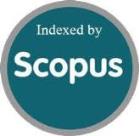Multifunctional Intelligent Helmet to Enhanced Safety and Comfort of Laborers in the Mining Industry
DOI:
https://doi.org/10.46604/aiti.2024.14394Keywords:
miner safety, detection, location tracking, communication, emergency alertsAbstract
This study aims to enhance miner safety through real-time monitoring and emergency responses. To achieve this, a multi-functional mining helmet (MFMH) is designed with location tracking via a global system for mobile communications (GSM) and global positioning system (GPS), hazardous gas detection, lighting, and temperature regulation, along with vibration-based alerts for emergency notification. The helmet is tested in simulated mining environments to assess its performance. The system successfully detected hazardous gases at concentrations of 41.23 ppm, triggered automatic lighting when luminosity dropped below 35 lux, and maintained internal temperatures between 26 ℃ and 27 ℃, demonstrating its effectiveness in safety.
References
S. R. Deokar and J. S. Wakode, “Coal Mine Safety Monitoring and Alerting System,” International Research Journal of Engineering and Technology, vol. 04, no. 03, pp. 2146-2149, 2017.
P. Mishra, P. Pai, P. Singh, V. Kayande, and M. Parmar, “Implementation of a Smart Helmet with Alcohol and Fall Detection and Navigation System,” International Conference on Innovative Computing and Communications, vol. 2, pp. 239-251, 2022.
P. J. Patil, M. Bhole, D. N. Pawar, S. Nadgaundi, R. Pawar, and A. Mhatre, “Smart Helmet for Coal Mine Workers,” International Conference on Integration of Computational Intelligent System, pp. 1-5, 2023.
M. Rudrawar, S. Sharma, M. Thakur, and V. Kadam, “Coal Mine Safety Monitoring and Alerting System with Smart Helmet,” ITM Web of Conferences, vol. 44, article no. 01005, 2022.
L. Cao, J. Han, L. Duan, and C. Huo, “Design and Experiment Study of a New Thermoelectric Cooling Helmet,” Procedia Engineering, vol. 205, pp. 1426-1432, 2017.
V. M. Mane and H. A. Durge, “Multifeatured Electronic Helmet to Enhance Road Safety and Rider’s Comfort,” Proceedings Engineering and Technology Innovation, vol. 28, pp. 41-54, 2024.
A. Gautam, G. Verma, S. Qamar, and S. Shekhar, “Vehicle Pollution Monitoring, Control, and Challan System Using MQ2 Sensor Based on Internet of Things,” Wireless Personal Communications, vol. 116, no. 2, pp. 1071-1085, 2021.
A. Bhagya Lakshmi, C. Ragunath, R. Yeswanth, and M. Rajkumar, “Smart Helmet for Riders to Avoid Accidents Using IoT,” 2nd International Conference on Computer, Communication and Control, pp. 1-4, 2024.
K. Khedkar, K. Pawar, S. Dhumal, and R. Tandalekar, “Accident Detection and Alert System,” International Journal of Scientific Research in Engineering and Management, vol. 8, no. 4, article no. 31371, 2024.
K. Y. Koo, D. Hester, and S. Kim, “Time Synchronization for Wireless Sensors Using Low-Cost GPS Module and Arduino,” Frontiers in Built Environment, vol. 4, article no. 82, 2019.
P. Mohare, S. N. Bhatlawande, P. J. Shelke, and K. R. Savalekar, “IoT-Based Accident Detection and Alert System,” International Journal of Advanced Research in Science, Communication and Technology, vol. 4, no. 1, pp. 145-148, 2024.
S. Adhav and D. B. Salunke, “Design and Construction of Hazardous Gas Detection and Control System for Electric Vehicle Cabin,” International Journal for Research in Applied Science & Engineering Technology, vol. 11, no. VI, pp. 2601-2611, 2023.
N. binti Mazalan, J. K. Elektrik, and P. Merlimau, “Application of Wireless Internet in Networking Using NodeMCU and Blynk App,” Seminar LIS at Politeknik Mersing Johor, pp. 1-8, 2019.
Venkateshappa, H. Chethan, C. L. Jayaraj, V. N. Jatinjayasimha, and D. S. Srihari, “Home Automation with Blynk and NodeMCU,” Turkish Journal of Computer and Mathematics Education, vol. 12, no. 12, pp. 2669-2674, 2021.
E. Media’s, Syufrijal, and M. Rif’an, “Internet of Things (IoT): Blynk Framework for Smart Home,” KnE Social Sciences, vol. 8, no. 12, pp. 579-586, 2019.
V. Meshram, P. V. N. Meghana, R. Sahana, L. S. Lasya, and S. S. Reddy, “IoT-Based Alert System for Geriatric,” Manipal Journal of Science and Technology, vol. 7, no. 2, article no. 2, 2022.
Y. Tian, Z. Zhang, L. Tian, and W. Zhao, “Design and Research of Indoor Lighting Control System Based on the STM32,” International Journal of Advanced Network, Monitoring and Controls, vol. 07, no. 03, pp. 33-42, 2022.
H. S. Sahu, N. Himanish, K. K. Hiran, and J. Leha, “Design of Automatic Lighting System Based on Intensity of Sunlight Using BH-1750,” International Conference on Computing, Communication and Green Engineering, pp. 1-6, 2021.
R. T. Yunardi, A. A. Firdaus, M. N. Abdulloh, S. D. N. Nahdliyah, and K. T. Putra, “Relay Module IoT Devices for Remote Controlling of Home Automation System,” 2nd International Conference on Electronic and Electrical Engineering and Intelligent System, pp. 350-354, 2022.
W.O. Adedeji and T. S. Amosun, “Design of a PLC Based Temperature Controlled System,” R.E.M. (Rekayasa Energi Manufaktur) Jurnal, vol. 8, no. 2, pp. 93-100, 2023.
S. F. Perdana, “AC 220V Digital Thermostat Based Drying Oven Xh-W3001 to Improve Temperature Accuracy in the Drying Process of Black Betel Leaves (Piper betle var Nigra) at Pt. Fbion Karanganyar,” 2nd International Conference on Early Childhood Education in Multiperspective, vol. 2, pp. 395-406, 2023.

Published
How to Cite
Issue
Section
License
Copyright (c) 2025 Harshal Ambadas Durge, Vijay Mahadeo Mane, Arjun Jaggi, Preetish Kakkar

This work is licensed under a Creative Commons Attribution-NonCommercial 4.0 International License.
Submission of a manuscript implies: that the work described has not been published before that it is not under consideration for publication elsewhere; that if and when the manuscript is accepted for publication. Authors can retain copyright in their articles with no restrictions. is accepted for publication. Authors can retain copyright of their article with no restrictions.
Since Jan. 01, 2019, AITI will publish new articles with Creative Commons Attribution Non-Commercial License, under The Creative Commons Attribution Non-Commercial 4.0 International (CC BY-NC 4.0) License.
The Creative Commons Attribution Non-Commercial (CC-BY-NC) License permits use, distribution and reproduction in any medium, provided the original work is properly cited and is not used for commercial purposes.







